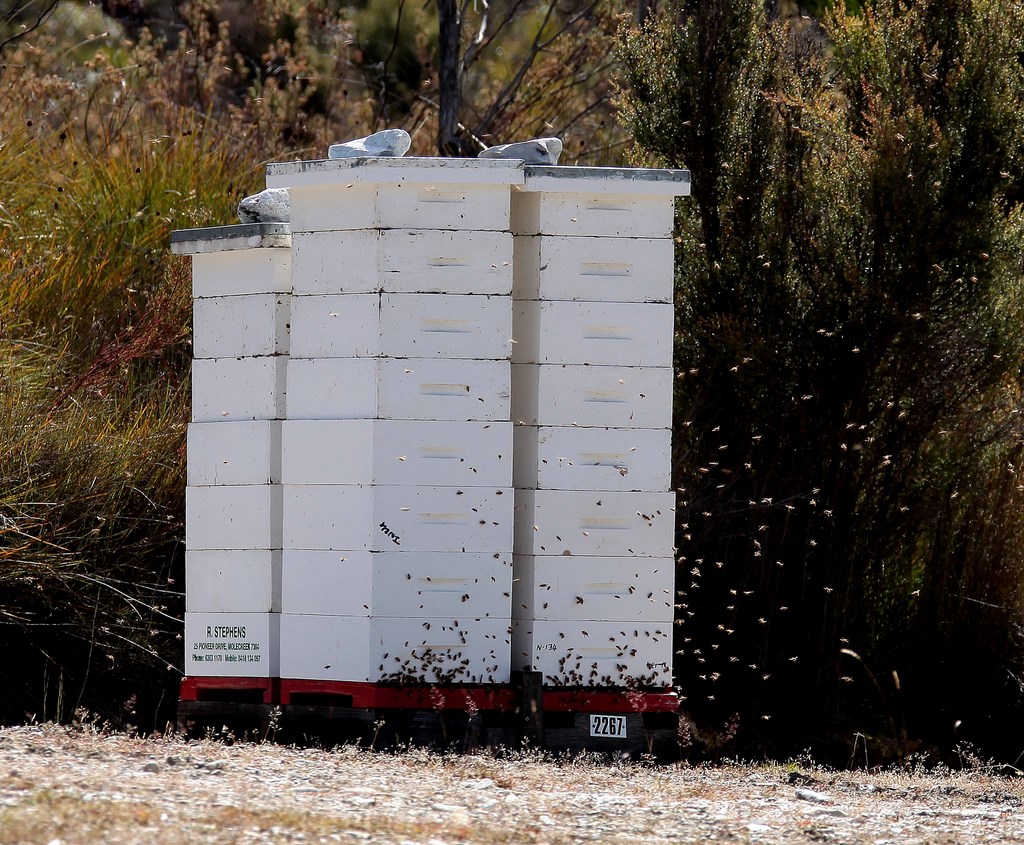ABEILLES ET RUCHE
Une ruche est une structure artificielle, presque fermée, abritant une colonie d'abeilles butineuses qui vit, produit du miel et élève de nouvelles générations d'abeilles. La ruche est l’unité de vie construite par l’apiculteur pour accueillir une colonie d’abeilles. Il s'agissait autrefois d'une structure tressée ou creusée dans un tronc mort. Il s'agit aujourd'hui généralement d'une caisse de bois. Dans tous les cas, l’intérieur de la ruche est composé de rayons formés par des cellules hexagonales de cire d'abeille. Les abeilles utilisent les cellules pour le stockage de la nourriture (miel et pollen), et pour le renouvellement de la population (œufs, larves et nymphes). Seules deux espèces du sous-genre Apis ont pu être domestiquées (Apis mellifera en Occident et Apis cerana en Orient). L’ennruchage ou l’enruchement est l'action de peupler d'abeilles une ruche. Un groupe de ruches est un rucher.
------------------------------------
A beehive is an enclosed structure in which some honey bee species of the subgenus Apis live and raise their young. Natural beehives are naturally occurring structures occupied by honeybee colonies, such as hollowed-out trees, while domesticated honeybees live in man-made beehives, often in an apiary. These man-made structures are typically referred to as "beehives". Several species of Apis live in hives, but only the western honey bee (Apis mellifera) and the eastern honey bee (Apis cerana) are domesticated by humans. A natural beehive is comparable to a bird's nest built with a purpose to protect the dweller. The beehive's internal structure is a densely packed group of hexagonal cells made of beeswax, called a honeycomb. The bees use the cells to store food (honey and pollen) and to house the "brood" (eggs, larvae, and pupae). Artificial beehives serve several purposes: production of honey, pollination of nearby crops, housing supply bees for apitherapy treatment, as safe animals for bees in an attempt to mitigate the effects of colony collapse disorder, and to keep bees as pets. Artificial hives are commonly transported so that bees can pollinate crops in other areas. A number of patents have been issued for beehive designs.
------------------------------------
A beehive is an enclosed structure in which some honey bee species of the subgenus Apis live and raise their young. Natural beehives are naturally occurring structures occupied by honeybee colonies, such as hollowed-out trees, while domesticated honeybees live in man-made beehives, often in an apiary. These man-made structures are typically referred to as "beehives". Several species of Apis live in hives, but only the western honey bee (Apis mellifera) and the eastern honey bee (Apis cerana) are domesticated by humans. A natural beehive is comparable to a bird's nest built with a purpose to protect the dweller. The beehive's internal structure is a densely packed group of hexagonal cells made of beeswax, called a honeycomb. The bees use the cells to store food (honey and pollen) and to house the "brood" (eggs, larvae, and pupae). Artificial beehives serve several purposes: production of honey, pollination of nearby crops, housing supply bees for apitherapy treatment, as safe animals for bees in an attempt to mitigate the effects of colony collapse disorder, and to keep bees as pets. Artificial hives are commonly transported so that bees can pollinate crops in other areas. A number of patents have been issued for beehive designs.
